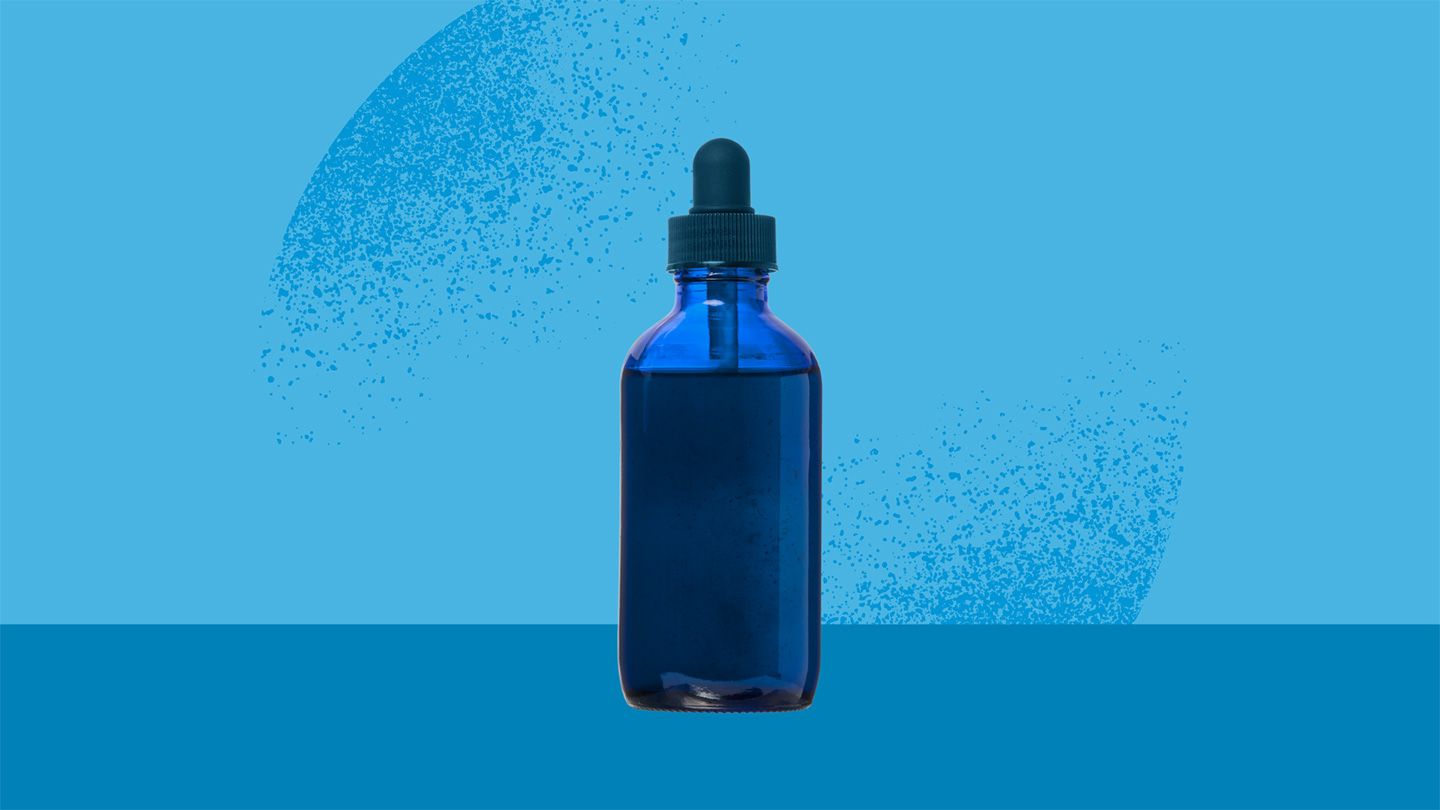Earlier this year, a video on YouTube of Robert F. Kennedy Jr. mixing a bright blue liquid into his drinking water midflight lit up social media.
Almost immediately, scientists and curious viewers speculated that the Health and Human Services Secretary was taking methylene blue, a century-old synthetic chemical that’s been used as a fabric dye, fish tank disinfectant, and blood disorder treatment. Recently, the chemical has gained popularity among wellness influencers on TikTok and biohackers as a brain health cure-all, mood and energy booster, and longevity promoter.
Experts, however, say it’s not a great idea to hop on the #bluetongue bandwagon just yet.
What Is Methylene Blue?
Methylene blue is a synthetic dye first developed in the late 1800s to stain fabrics. By the early 20th century, doctors began to use it as one of the first chemotherapies and as a treatment for malaria, says Jamie Alan, PharmD, PhD, a pharmacologist at Michigan State University in East Lansing.
“Although it was effective in malaria, it has been largely replaced by other therapies,” says Dr. Alan.
Why Do Some Wellness Influencers Use Methylene Blue?
Methylene blue users say that putting a few drops of the chemical in their water improves memory, cognition, sleep, skin aging, energy, and longevity.
What’s the Evidence for Methylene Blue?
“There is not solid data on how methylene blue would work off-label for something like cognitive function,” says Alan.
Why Experts Think Taking Methylene Blue Is Risky
Methylene blue can be prescribed off-label for a variety of purposes, including vasoplegic syndrome (a type of shock that can happen during heart procedures), Lyme disease, and as an add-on to cancer therapy.
But physicians are concerned about people medicating themselves with methylene blue. “I do not recommend that anyone use methylene blue on their own. It should only be used under the supervision of a healthcare provider,” she says.
There are significant risks to taking methylene blue, says Alan, including:
- Central Nervous System Symptoms Because methylene blue can cross into the brain, it can cause central nervous side effects such as dizziness, confusion, and headache.
- Serotonin Syndrome Methylene blue interacts with several antidepressant drugs, and the combination can potentially lead to serotonin syndrome, a serious drug reaction caused by high levels of serotonin in the body. Symptoms include tremors, insomnia, confusion, and diarrhea. “It’s quite unpleasant while it is happening,” says Alan.
- Kidney Damage Patients with poor kidney function should be especially cautious about using this compound.
Methylene blue also changes the color of a person’s urine to a blue-green color, although this is technically harmless, says Alan.
Bottom Line: Any Potential Benefits of Methylene Blue Aren’t Worth the Risk
Alan says any potential benefits of methylene blue are not worth putting your health at risk.
It’s also important to recognize that many people talking about the chemical on social media may not be completely familiar with the data, she says. “This is why healthcare professionals, not celebrities or politicians, should be the experts people seek when deciding whether or not to try the ‘latest and greatest’ trend.”
Read the full article here




